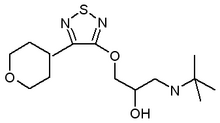Did you know that what you put in your eyes can change your blood pressure?
We invite all our readers who use eye drops for glaucoma to participate in an experiment using a blood pressure cuff or automatic monitor to measure their blood pressure levels morning and night.
Some common eye drops for glaucoma include Alphagan, Trusopt, Timoptic, and Lumigan. We would like to investigate how much some of the eye drops can lower systemic blood pressure.
Even if you are fortunate enough not to have glaucoma, a record of your blood pressure fluctuations might become valuable to your cardiologist, should hypertension emerge later.
Hypertension is one of the many less studied risk factors for glaucoma. Important risk factors are family history, ethnicity, diabetes, advancing age ... all increase one's chances of developing the vision-robbing condition.
For that reason, it is important for seniors to have their intraocular pressure checked. High eye pressure can cause damage to the 1.2 million axons in the optic nerve.
In addition, patients should tell their ophthalmologists if they are hypertensive. The chart below might give their eye doctors or cardiologists a better understanding of the average blood pressure.
We conducted an experiment on a patient in whom blood pressure readings were measured in the morning, at noon, and at night. We discovered that her blood pressure level is higher in the morning upon arousal and lower at night. However, when the patient began using eye drops to treat glaucoma, blood pressure readings were lower than ever recorded in the past. The patient's cardiologist was considering whether to begin antihypertensive prescription medicines when suddenly, the eye drops lowered her systemic blood pressure within normal range.
It is easy to take blood pressure readings today. When you buy a blood pressure monitor, have it calibrated by your doctor. Take your equipment along when visiting your hypertension specialist or primary care provider to determine whether your results match theirs.
Use the chart at left to keep records of morning and evening blood pressure readings. If you use eye drops, try taking your pressure a half-hour after using them.
Even if you don't have glaucoma, tracking your blood pressure readings might give your doctor advance notice should high blood pressure emerge later.
To participate in our survey, send a copy of the completed chart to American Foundation for Preventive Medicine, P.O Box 567, Indianapolis, IN 46206.
COPYRIGHT 2004 Saturday Evening Post Society
COPYRIGHT 2004 Gale Group



